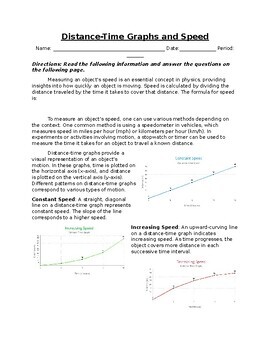Forces and Motion Bundle: Informational Text, Images, and Assessment
Greg Powers
8 Followers
Grade Levels
4th - 9th, Homeschool
Subjects
Resource Type
Standards
NGSS3-PS2-1
NGSSHS-PS2-5
NGSS3-PS2-3
NGSSMS-PS2-4
NGSSMS-PS2-3
Formats Included
- Zip
Pages
15 pages
Greg Powers
8 Followers
Products in this Bundle (5)
Description
This bundle contains 5 assignments over the following topics on Forces and Motion:
· Distance-Time Graphs and Speed
· Newton’s Three laws of Motion
· The Law of Universal Gravitation
· Types of Forces
· Unbalanced Forces and Motion
Each of the above topics contains a worksheet with informational text and illustrations. A 10 question assessment is on page 2 of each worksheet that assesses the student over the informational text section. There is also an answer key on page 3 for each worksheet for teacher use. The entire bundle is editable.
Total Pages
15 pages
Answer Key
Included
Teaching Duration
3 hours
Last updated 5 months ago
Report this resource to TPT
Reported resources will be reviewed by our team. Report this resource to let us know if this resource violates TPT’s content guidelines.
Standards
to see state-specific standards (only available in the US).
NGSS3-PS2-1
Plan and conduct an investigation to provide evidence of the effects of balanced and unbalanced forces on the motion of an object. Examples could include an unbalanced force on one side of a ball can make it start moving; and, balanced forces pushing on a box from both sides will not produce any motion at all. Assessment is limited to one variable at a time: number, size, or direction of forces. Assessment does not include quantitative force size, only qualitative and relative. Assessment is limited to gravity being addressed as a force that pulls objects down.
NGSSHS-PS2-5
Plan and conduct an investigation to provide evidence that an electric current can produce a magnetic field and that a changing magnetic field can produce an electric current. Assessment is limited to designing and conducting investigations with provided materials and tools.
NGSS3-PS2-3
Ask questions to determine cause and effect relationships of electric or magnetic interactions between two objects not in contact with each other. Examples of an electric force could include the force on hair from an electrically charged balloon and the electrical forces between a charged rod and pieces of paper; examples of a magnetic force could include the force between two permanent magnets, the force between an electromagnet and steel paperclips, and the force exerted by one magnet versus the force exerted by two magnets. Examples of cause and effect relationships could include how the distance between objects affects strength of the force and how the orientation of magnets affects the direction of the magnetic force. Assessment is limited to forces produced by objects that can be manipulated by students, and electrical interactions are limited to static electricity.
NGSSMS-PS2-4
Construct and present arguments using evidence to support the claim that gravitational interactions are attractive and depend on the masses of interacting objects. Examples of evidence for arguments could include data generated from simulations or digital tools; and charts displaying mass, strength of interaction, distance from the Sun, and orbital periods of objects within the solar system. Assessment does not include Newton’s Law of Gravitation or Kepler’s Laws.
NGSSMS-PS2-3
Ask questions about data to determine the factors that affect the strength of electric and magnetic forces. Examples of devices that use electric and magnetic forces could include electromagnets, electric motors, or generators. Examples of data could include the effect of the number of turns of wire on the strength of an electromagnet, or the effect of increasing the number or strength of magnets on the speed of an electric motor. Assessment about questions that require quantitative answers is limited to proportional reasoning and algebraic thinking.





